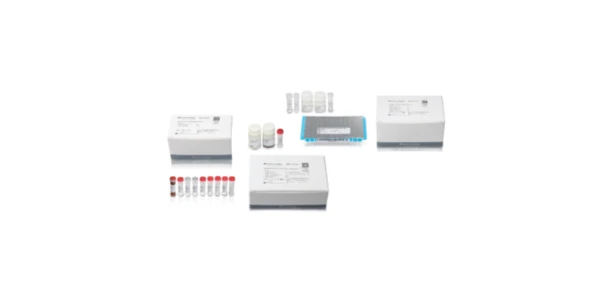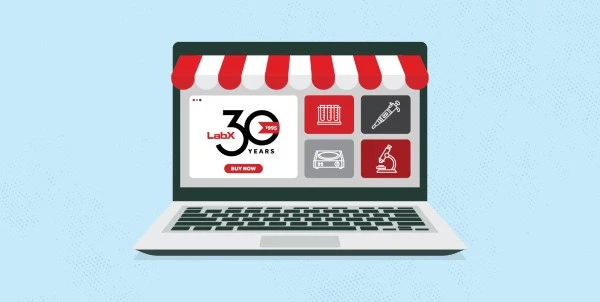Cannabis Testing Lab Equipment Essentials
Some cannabis enthusiasts may see the growing testing industry as a green rush, ripe with opportunity. Established lab professionals may view the cannabis field as fertile ground to plant their seeds of knowledge and experience in analytical testing.
Regardless of where interested parties may originate, critical questions and considerations for starting up a cannabis testing lab await them. The resources and solutions associated with these considerations directly correlate to the success (or failure) of the operation.
It is therefore essential to carefully research and plan all elements of the lab set up – perhaps most importantly, sourcing the proper equipment and resources necessary to provide the results.
Why are you entering the business and what are you looking to accomplish? What do you know about the testing business and from where do you plan to draw expertise and resources? What do you plan to test and how do you plan to establish quality and credibility? These are critical questions to consider at the onset.
Business and legal professionals can help with the logistics of securing capital and maintaining compliance with applicable laws and regulations, which can include state licensing, certification, and accreditation.
After these details are addressed, however, the most important (and expensive) tasks come to bear – securing the equipment, hiring the chemists and staff, and configuring the infrastructure to house the operation.
Cannabis potency testing
Potency testing must adhere to the guidelines and standards set forth from each state. The instruments for testing will be determined by the tests that a given state requires. As federal laws evolve, so will the rules and regulations set forth by federal testing agencies, as well as instrument requirements.
In potency testing, a panel of cannabinoids are typically required along with suggested or optional analytes. Prior to cannabinoid analysis, the cannabinoids must be extracted from the source material, whether it be cannabis flower, consumable, or other.
Cannabis extraction
- Flower can be ground using a mill or grinder with sieve size and processing rate appropriate to source material and the amount needed for the analysis. Consumables such as gummies and other food items can be pulverized using a freezer mill. The goal of either method is to decrease particle size and homogenize the sample such that the material can be effectively solubilized and the cannabinoids efficiently extracted.
- Extraction can make use of a number of solvents, methods, and instruments – which will vary depending on the source of the material, the desired product, and the scale of the operation.
- Hydrocarbon-based solvents require containment and temperature control devices. Supercritical fluids such as carbon dioxide require dedicated extraction devices complete with precise temperature and pressure control features.
- Regardless of the materials, all extracts typically require filtration prior to downstream processing.
- Depending on the needs for solvent removal and fractionation, specified evaporation and distillation devices are used. While a rotary evaporator can produce a complex total extract, fractional or short path vacuum distillation devices can offer higher yields of distinct cannabinoid enriched fractions. Thin film or centrifugal distillation systems can offer thermal stability with lower vacuum, with a greater level of efficiency for further refined fractionations.
- The choice of distillation methods and instruments again depend on the source materials, the scale, and the requirements for refinement of the product.
Cannabinoid detection and quantification
Extract in hand, cannabinoid identification and quantification typically make use of HPLC, LC-MS, GC, GC-MS, ICP-MS and others -- depending on the source material, the extraction solvent, and the requirements of the analysis.
- Cannabidiol and similarly volatile compounds are well suited for gas chromatography (GC) analysis, although liquid chromatography (LC) can also be used depending on the extract and solvent profile. For GC, a heated sample injector and flame ionization detector work in concert with the separation column. A headspace unit may be used for samples and analytes with increased volatility such as certain cannabinoids and terpenes.
- LC resolves analytes in the liquid phase, using interaction of mobile phase with stationary phase chromatographic material similar to GC. An autosampler serves the duty of (multi) sample injection, a diode array or other spectroscopic detector works downstream, and a fraction collector captures the eluted samples.
- Use of a MS mass analyzer and detector on the backend can stratify complex matrices where compounds of interest may be masked by contaminating substances.
- Testing regulations may require very low sensitivity and high resolution of the analysis as well, and a MS device coupled inline with a GC or LC is best suited in these cases.
- High-quality certified reference standards for the cannabinoids of interest are used for full quantitative analysis. Semi-quantitative analysis without the use of standards can provide information simply on the presence of cannabinoids and background compounds or contaminants.
- Instruments and methods must perform according to state guidelines and be calibrated on a routine basis in order to stay in compliance.
Cannabis testing for residual solvents – pesticides - heavy metals – moisture – microbes
Residual solvents may be present as a result of the extraction process and may be hazardous for consumption or inhalation. Pesticides and heavy metals may be present as an result of cultivation practices. Moisture can give rise to fungus and microbial growth in harvested product as well.
In the workflow linking harvested material processing to product manufacturing, it is often essential to test for these contaminants to ensure quality and safety are maintained. Testing along these lines is valuable to ensure the quality assurance (QA) and quality control (QC) of operations and good laboratory practices (GLP) and good manufacturing processes (GMP) are met or exceeded.
- The presence of residual solvents including hydrocarbons and carbon dioxide can be analyzed by GC typically using a flame ionization detector (FID).
- Pesticides analysis can involve both LC-MS and GC-MS platforms, depending on the extent and volatility of the compounds of interest.
- Spectral libraries for pesticides can assist in the identification (and quantification) of distinct compounds.
- Heavy metals can be tested using an atomic adsorption (AA) spectrometer or inductively coupled plasma MS (ICP-MS), although variants of mass spectrometry techniques are also used. State regulations regarding pesticide testing vary and federal guidelines for product safety adhere to rigid testing criteria which may be increasingly important as regulations evolve.
- Moisture analysis can make use of moisture balances or karl fischer titration devices, depending again on the materials to be tested.
- Microbial detection can involve culture isolation, polymerase chain reaction (PCR or qPCR), or DNA sequencing.
Cannabis equipment sources
Many factors are at play in the cannabis testing business.
- Labs require the right instrumentation for the required analyses as dictated by state and local regulations.
- Test instruments have their own requirements such as proper venting, power, heat dissipation, and overall operating standards.
- These details are compounded by need for facilities, staff, and instrument services necessary to keep testing lab operations running effectively.
- All of these considerations must be addressed prior to opening the testing lab doors for business – as the costs of operations will escalate quickly without the right pieces in place.
Quality instrument vendors are sensitive to the needs and limitations that many start up labs must endure. As such, there are many options for new or quality refurbished instruments, training and method development programs, service contracts and warranties, purchase financing and leasing options, and more. It’s best to perform as much research as possible and learn all you can in the search for the right solutions.
Be sure to visit the LabX Cannabis Laboratory Application Page and our growing cannabis laboratory resource library for more information and product insight










